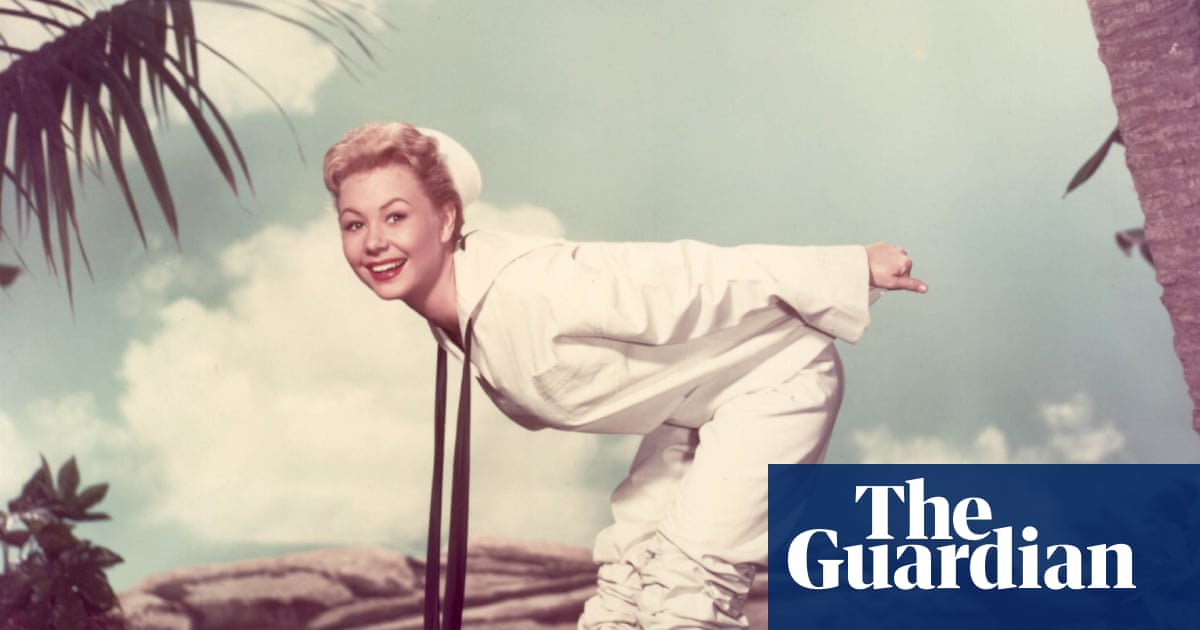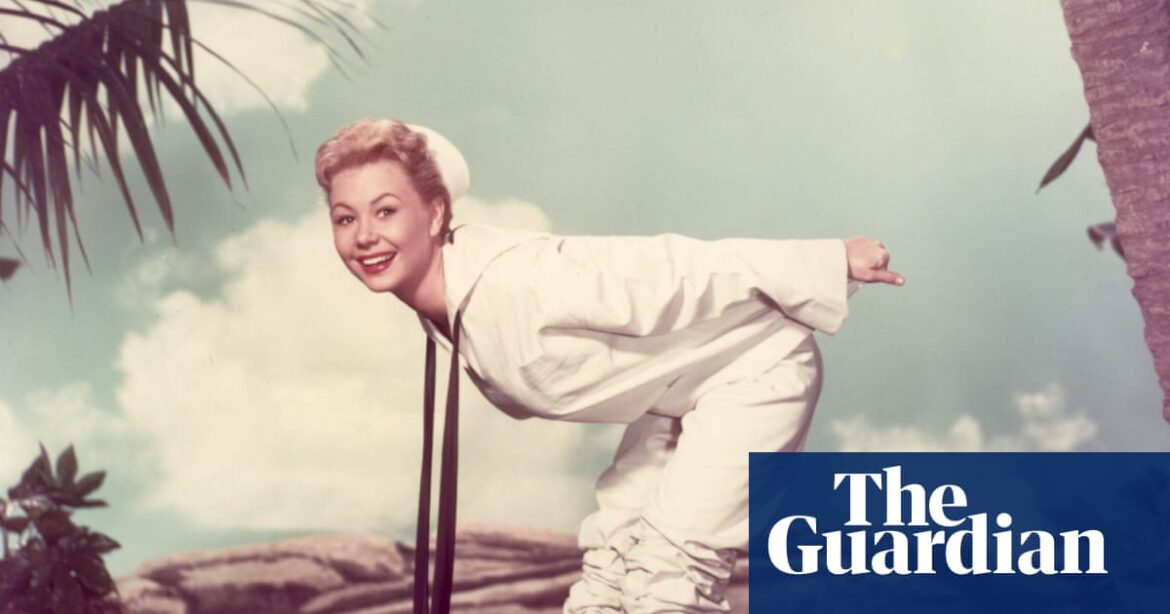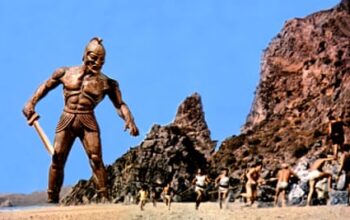
The actor and singer Mitzi Gaynor, best remembered as the star of the 1958 film musical South Pacific, began her showbiz career as an ingenue – the young, pretty female stock character whose marriage ends old-style comedies: the audience never gets to see her grow into a woman. And a bubbly ingenue Gaynor remained throughout a long performing life, still working her adorability when she made her Manhattan cabaret debut at Feinstein’s in 2010 at 78.
Gaynor, who has died aged 93, had talent. Her speaking tended to the cute, though she had enough belt as a singer to be plausibly cast into the vaudeville family of There’s No Business Like Show Business (1954), as Ethel Merman’s daughter – they duetted brassily. She was a competent enough dancer to carry the centre of Jack Cole-choreographed routines in The I Don’t Care Girl (1953) and hoof with the skilled Donald O’Connor in Anything Goes (1956). But, as she remarked ruefully in later years, what she had never been was sexy.
Movie costume designers, including Renié and Orry-Kelly, exhibited her tiny frame, long in the legs, in a minute beaded bathing suit, or an almost backless dress, yet her persona was virginal next to co-stars such as Gwen Verdon or Marilyn Monroe. Her big dance number, Gone About That Gal, with Gene Kelly in Les Girls (1957) – she’s a bar waitress, he’s a Hell’s Angel biker – almost achieves sexy, suggesting a different future she didn’t go into, as did her serious role as drunk Frank Sinatra’s wife in The Joker Is Wild (1957).
Gaynor was shooting that film when Oscar Hammerstein II, Richard Rodgers’s lyricist, asked to hear her sing. Sinatra arranged a day off and she screentested for the part of Nellie Forbush, the US Navy nurse at war with her small-town prejudices as well as the Japanese in South Pacific.
She was nobody’s first choice. Everybody had wanted Mary Martin, who had debuted the role on Broadway in 1949, but in 1958 Martin was in her mid-40s. The director Joshua Logan offered it to Doris Day, who declined. Mike Todd, with a financial share in the film, favoured his wife Elizabeth Taylor, who was nixed by Rodgers.
Gaynor did a second test. Her Nellie turned out a fine cockeyed optimist, and the film was a huge box-office hit, nominated for three Oscars. She borrowed Martin’s moves without Martin’s diva eccentricities
, and was right for a sweet little girl in her 20s from Little Rock, Arkansas, responding to love and loss. She projected a, for her, new edge of struggle, of things going less smoothly than expected.
They had flowed for Gaynor – her stage name was taken from the movie star Janet Gaynor – through childhood. She was born in Chicago, named Marlene and nicknamed Mitzi, a ditsy moniker that seemed to determine her lifetime identity. Her father was the cellist Henry de Czanyi von Gerber, her mother, Pauline (nee Fisher), a dancer: they divorced, and mother and daughter settled in California. Mitzi, with her mother’s dedicated support, began to dance in the ballet corps of Los Angeles Civic Light Opera at 13, and she was offered a contract by Twentieth Century Fox. Her first role, still a teen, was supporting Betty Grable in My Blue Heaven (1950).
Gaynor was strong enough at 20 to lead Golden Girl (1951), a nearly biopic of Lotta Crabtree, America’s stage sweetheart who had toured the nation from the 1860s to 1890, and other musicals followed fast. Then the studio dropped her contract, and she tried to eat her way out of depression until Jack Bean, a talent agent with the Music Corporation of America company, took over her management after their marriage in 1954, and helped restore her confidence and her feather weight.
He lined her up for four films, which meant she had to say no when an offer came from Broadway to play the devil’s chief seductress, Lola, in a new musical, Damn Yankees: it went to Verdon, who employed an erotic hip wiggle Gaynor might never have dared.
In all her life, Gaynor had just one small part on Broadway, in Gypsy Lady (1946), and after South Pacific made only three more movies, the last For Love Or Money (1963): unlike Day, she did not transition comfortably to the romantic comedy genre.
Still, Bean arranged solidly paying engagements. Gaynor picked up the “female star surrounded by male dancers” approach to shows that Cole had perfected, and for more than a decade she was a Las Vegas headliner. Television shows, too, were eager to offer guest slots to headliners such as Gaynor, as they came prepackaged with choreography and costumes. She was a fan of the designer Bob Mackie, master of sequins, feathers, beads and other stage paraphernalia: he dressed most of her appearances from 1966.
A routine for the 1967 Academy Awards staging was Gaynor’s entry to another decade of employment in her own television variety specials, some Emmy-award winning. And when that outlet diminished around 1980, Gaynor, following the example of Crabtree, took her show on the road, extending tours to as many 28 sometimes less than stellar venues over eight months each year, arriving by limo with many Mackie wardrobe changes packed in a following taxi. (Gaynor said in the 80s: “Only two people do this kind of show any more – the other is Liberace.”)
Back home in Beverly Hills, California, she kept to her dancer’s exercise discipline for as long as she was able.
Jack died in 2006.
Source: theguardian.com



